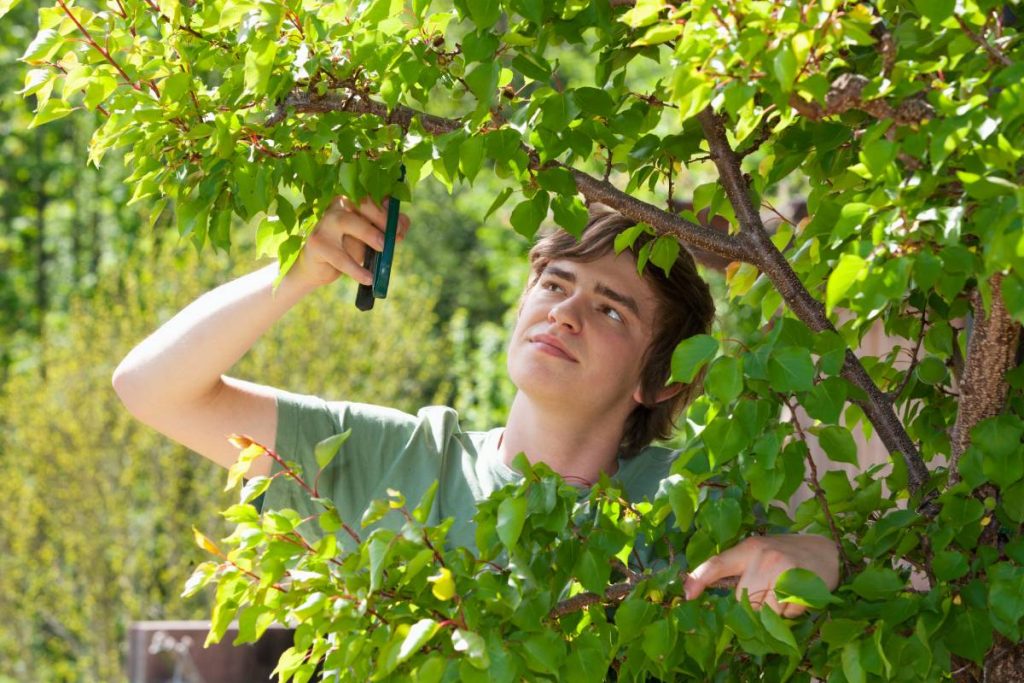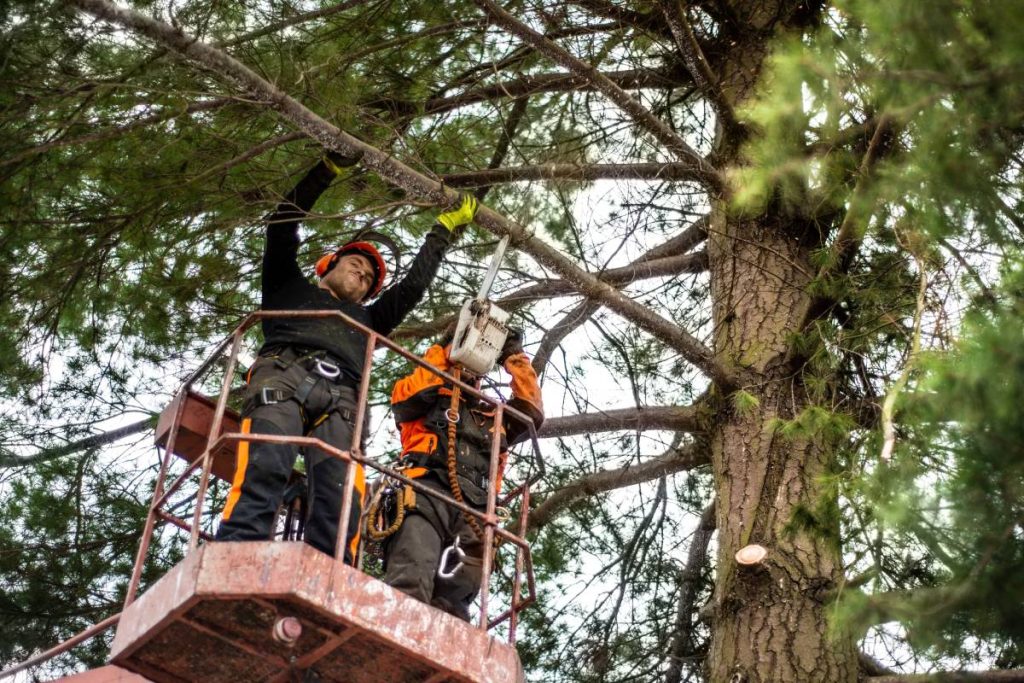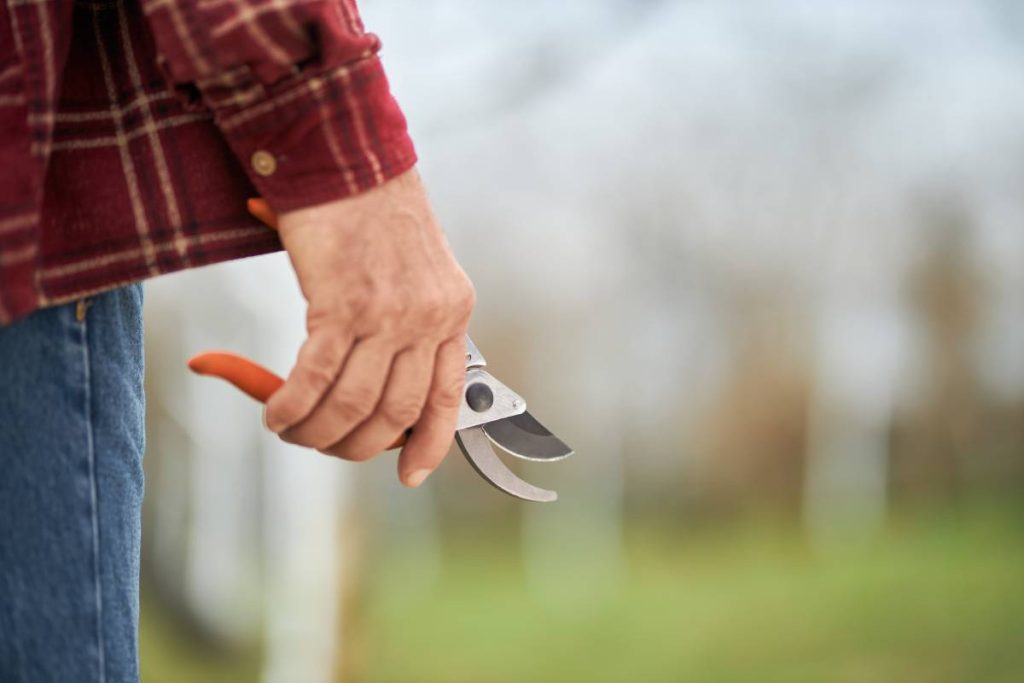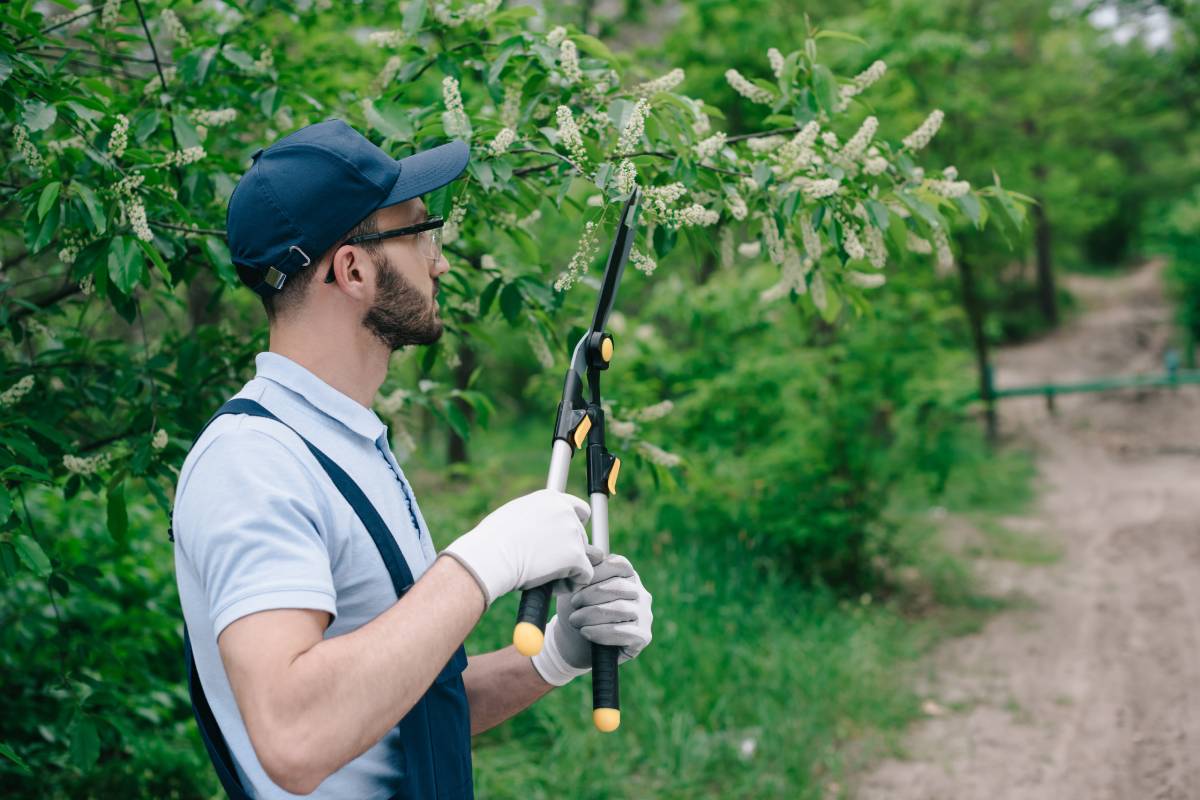What are the key differences between tree pruning and tree lopping? When should you prune, and when should you lop? Click here for more
Tree maintenance is crucial for both the health of trees and the overall aesthetics of your property. However, not all tree care methods are created equal.
When it comes to maintaining trees, terms like pruning and lopping are often used interchangeably, but they are distinctly different processes. Understanding these differences is essential to ensuring your trees are cared for properly, whether it’s for their long-term health, growth management, or safety.
In this article, we will explore the key differences between tree pruning and tree lopping, the advantages and disadvantages of each, and when it’s appropriate to use one over the other.

What is Tree Pruning?
Tree pruning is a highly selective process that involves the careful removal of specific branches or parts of a tree. This process is conducted with the tree’s long-term health and structural integrity in mind. Pruning is generally done to:
- Promote healthy growth: Pruning removes dead, damaged, or diseased branches that could otherwise compromise the health of the tree. By eliminating these branches, the tree can focus its energy on healthy growth.
- Enhance structure: Proper pruning helps to shape the tree, encouraging balanced growth patterns and reducing the risk of branches growing too close to one another or becoming structurally weak.
- Increase safety: Sometimes, branches grow too close to power lines or buildings, or they might pose a risk of falling during strong winds or storms. Pruning reduces these risks by removing potential hazards.
- Improve appearance: Pruning can also be an aesthetic practice, shaping the tree in a way that improves its overall appearance and complements the landscape.
Pruning is a highly technical practice that should be performed by a tree pruning expert or a certified arborist who understands the biology of trees. This ensures that the tree’s growth is not disrupted, and any cuts made are clean and do not open the tree up to pests or diseases.

What is Tree Lopping?
In contrast, tree lopping is a more aggressive method of tree care. Lopping involves the indiscriminate cutting or trimming of large sections of a tree, often including the removal of the entire top portion or major branches. This practice is often done without considering the tree’s health, and it is generally performed when a quick, dramatic change is desired, such as:
- Reducing the size of the tree: Some homeowners may choose to lop trees that have grown too large for the space they are in, or when they pose a threat to nearby structures.
- Clearing land: Tree lopping is sometimes used when property owners need to clear land quickly and don’t necessarily care about preserving the health or longevity of the trees.
- Reducing risks: Like pruning, lopping is sometimes used to reduce the risk of falling branches, but it is a far less controlled and often riskier method.
However, lopping can have negative consequences for a tree’s health, such as:
- Weak new growth: Lopping often leads to rapid regrowth, but the new branches are weaker and more likely to break in the future, posing a greater safety hazard.
- Increased susceptibility to disease and pests: Lopping exposes large sections of the tree, making it vulnerable to diseases, fungi, and pests that can enter through open wounds.
- Stress on the tree: Lopping can cause significant stress, especially when large sections of the tree are removed. This stress can weaken the tree and even lead to its death.
Key Differences Between Tree Pruning and Tree Lopping
To further illustrate the differences between pruning and lopping, here are some key aspects that set them apart:
- Purpose and Approach
- Tree Pruning: Done with long-term tree health in mind, pruning is a targeted approach aimed at improving the tree’s structure, appearance, and health. It involves the precise removal of specific branches to enhance the tree’s natural growth.
- Tree Lopping: This is more of a quick-fix solution that involves cutting off large portions of the tree. The focus is usually on the size reduction of the tree rather than maintaining its overall health.
- Impact on Tree Health
- Tree Pruning: Pruning supports the health of the tree. By removing diseased or dead branches, it encourages the tree to grow stronger and live longer.
- Tree Lopping: Lopping can be damaging. Removing large portions of the tree indiscriminately can lead to shock, making the tree more vulnerable to disease and, in some cases, killing it.
- Aesthetic Consideration
- Tree Pruning: It enhances the aesthetic value of the tree by shaping its structure and ensuring a balanced, appealing form. Pruning can improve not only the look of the tree but also the overall landscape.
- Tree Lopping: This often leads to an unattractive appearance. After lopping, a tree can look bare and uneven, and the regrowth tends to be untidy and weak.
- Safety Concerns
- Tree Pruning: When done correctly, pruning increases the safety of the tree by eliminating hazardous branches and promoting stronger, more resilient growth.
- Tree Lopping: Though it may reduce the size of the tree and remove immediate risks, the long-term effects of lopping can make the tree more dangerous. Weak regrowth is more likely to break and cause damage in the future.
- Regrowth and Maintenance
- Tree Pruning: Once a tree has been pruned, it typically does not require frequent maintenance. The tree’s growth will be more controlled, and future pruning will only be needed occasionally.
- Tree Lopping: Lopping leads to rapid, often weak regrowth that may require frequent attention to prevent further hazards.

Tree Pruning
Given the stark differences between the two methods, knowing when to prune and when to lop is crucial. As a general rule, pruning is the preferred method of tree maintenance for most situations, while lopping should be avoided unless absolutely necessary.
- Pruning: If you’re looking to improve the overall health and appearance of a tree, pruning is the way to go. Whether you need to remove dead branches, reduce the risk of disease, or simply shape the tree to suit your landscaping goals, pruning is a precise and effective method.
- Lopping: Lopping should be a last resort. It is typically only used in situations where a tree poses an immediate threat to people or property, and even then, it should be carried out carefully by professionals. In some cases, lopping may be necessary if the tree is already in poor health and its removal is imminent, but again, this should be done with caution.
Why You Should Leave Tree Care to the Professionals
Both pruning and lopping require knowledge of tree biology and the appropriate techniques to avoid damage. Attempting either method without the necessary skills can lead to harmful results for the tree and potential safety risks for you. That’s why it’s essential to hire a professional arborist or tree care specialist.
Certified arborists have the training and experience to assess the health of your tree and determine the most appropriate care methods. They know how to make clean cuts that promote healing, how to identify and remove problematic branches, and how to ensure that the tree remains strong and healthy for years to come.
Conclusion
Tree pruning and tree lopping are vastly different approaches to tree maintenance. Pruning is a careful, selective process designed to enhance the health, safety, and beauty of a tree, while lopping is a more drastic and often harmful method of cutting back large sections. If you care about the long-term health of your trees and the safety of your property, pruning is the clear choice. However, when drastic measures are needed, always consult with a professional to ensure that the tree is handled in the best way possible.
If you’re unsure about how to maintain your trees or think they may need professional care, it’s always best to consult with experienced arborists. Contact your local arborist is a great way to get to know the company that specializes in ethical tree care practices, focusing on preservation and long-term health. Reach out to experts to ensure your trees get the proper attention they deserve.


